5 cars posting big gains despite a slow market
The Hagerty Price Guide is updated quarterly, and our methodology for tracking collector car values takes into account many factors, from auctions to private sales. For a better understanding of how we put it all together, check out this article.
Summer has turned to fall, and those of us in northern states are already thinking of the long winter to come and reluctantly planning for seasonal storage of our collector cars. Taking stock of the past three months, it’s safe to say that summer 2023 was an active one in the collector car market. We observed the second-strongest Monterey auctions of all time, as well as in-person and online auctions turning out a steady stream of sales. But like the crisp fall weather, the market has been cooling overall and showing signs of change.
And yet, despite this slowing, we observed several cars that posted notable gains over the course of the summer. Although the selection looks much different from over a year ago, there is still plenty to analyze. Here are five of the most substantial gainers in the latest edition of our price guide.
1955–58 Studebaker President: +70%
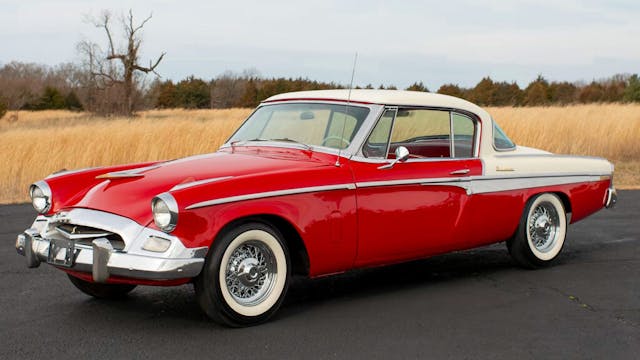
Studebaker Presidents posted a 70 percent uptick in value over the past few months. While the brand may not be as popular as many of its contemporaries, it was for a time one of the oldest and most respected car manufacturers in the U.S. By the 1950s, however, Studebaker was losing major market share to the Big Three, finally breathing its last in late 1963. For the 1950s, the President was the brand’s top-of-the-line model and offered better amenities than its Commander and Champion stablemates.
The rise of the President has been driven primarily by a surge of cars coming to market recently, all of which sold or were offered above prices we’ve previously tracked. A secondary driver (these are still low-volume cars in the grand scheme) is that these cars kept quiet while other American cars of the 1950s saw a renaissance in the market a few years ago. Studebakers just didn’t get the same surge that Chevys, Cadillacs, Fords and other well-known cars from the era enjoyed, and now President prices are playing catch-up. Studebaker is still a challenging marque to call: sales prices are high, but asking prices are even higher. This is where it is important to remember that asking prices do not equate to sale prices, and the longer a car sits on the market, the more apparent it becomes that the expectation of seller and potential buyer aren’t aligning. Regardless, it’s abundantly clear that if you thought Studebakers would be lost to time and ignored, the market begs to differ.
1982–85 Renault Fuego: +57%
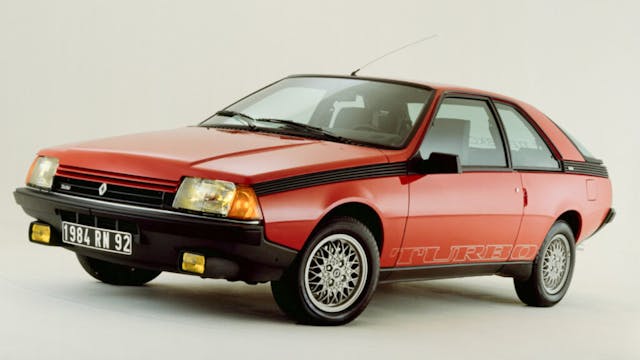
There are two groups of people looking at the Fuego. One is thinking, “I vaguely remember this car and I vaguely remember there being a good reason they stopped selling them here.” The other is thinking, “Wait, they sold a Renault here?” That’s right, folks, Renault sold cars in America for a hot second, but their Frenchness never really caught on. (Peugeot tried and failed, too.)
Sold through AMC dealers, Fuegos were small, fuel-efficient economy cars that actually looked pretty good. If you squint at one, it looks like some inspiration came from some of Citroën‘s better designs. But economy and looks couldn’t save the car from dismal sales, with just under 100,000 units sold in three years.
OK, so these are not particularly well remembered or common. But today they are cheap. You can still buy a nice one for under $15,000, and that’s a “really gotta have it” price. Unbelievably, however, not long ago you’d be nuts to pay more than a couple grand for one. (A big percentage gain on a cheap car still equates to an affordable purchase.) Fuegos experienced no real market value change for many years, so the moving market is having a visible effect here. We can only conclude that post-pandemic increases have effectively filtered into every level of the market—even cheap, forgotten French cars.
1970–72 Pontiac Firebird Formula: +36%
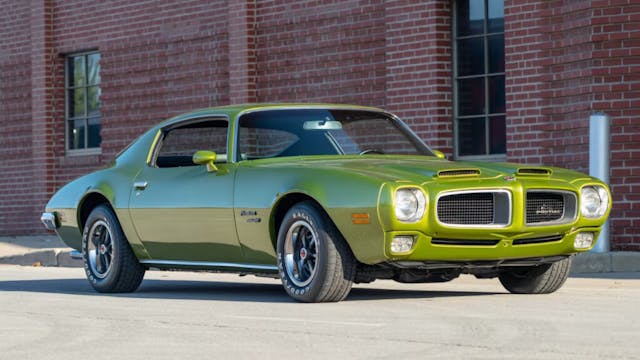
Second-generation Trans Ams are now bonafide automotive stars of the 1970s, from the early white-and-blue cars to the later “screaming chickens” of the Smokey and the Bandit era. But imagine, if you will, being a buyer in the early ’70s: you want all the punch of a Trans Am, but you’d rather not be goaded into drag racing by every kid at a stoplight because they know what you have. Well, Pontiac had just the right sleeper for you. The Formula 400 and 455 offered a more adult aesthetic with all the power of the T/A.
Though the general public took a long time to catch on, Pontiac aficionados have always known that the high-horsepower Formulas are much rarer than their flashier siblings, but still less expensive than the T/A. That changed this summer when a well-equipped 1971 Formula 455 HO sold on Bring A Trailer for huge money, even exceeding the values of a comparable T/A. Before we celebrate too hastily, it is important to remember that another Formula 455 HO sold on the same site in April for a much more modest price. This is a good reminder that single sales should call our attention to a potential market evolution, but they don’t dictate our view of the market—and it may not be the Formula’s time to pass the Trans Am in value. That said, we’ll be watching these cars, as the ones equipped with the same engine have rapidly closed the gap.
1986–93 Buick Riviera: +30%
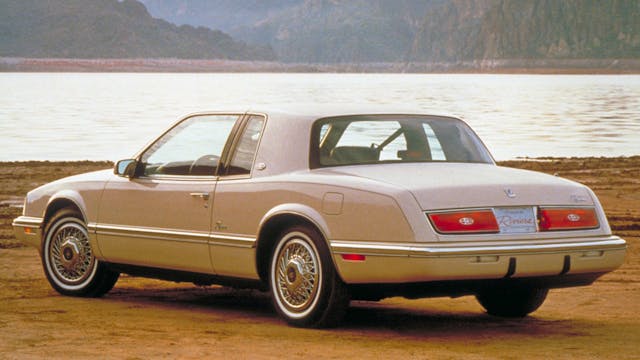
Here’s another one we rarely discuss, the 1986–93 Buick Riviera. The Riv has always been Buick’s top-tier personal luxury model. Unfortunately, while the Riviera started out as a sporty model with a long list of luxury appointments, the 1980s saw a bigger focus on luxury, and less on sporty. The fire-breathing V-8s from the early days were gone, replaced by a transverse-mounted 3.8-liter V-6 engine. Sure, they offered a T-Type version, but before you get excited, this one didn’t have a turbocharger like the Regal-based T-Types. These were the darkest of the dark times with respect to the cars GM was willing to force onto the public.
Were these really that boring? Certain car enthusiasts would be quick to respond, “Hell yes, they were.” But let’s take a step back for a minute. Anyone who has ridden in an ’80s Buick, Oldsmobile, or Cadillac will confirm that the seats are some of the most comfortable ever put into a car, and the digital dash and climate display in the Riviera is cool even by today’s standards… as long as it’s working. This might be a reach for some, but not all that was previously uncool is still completely uncool, especially at the price point of these cars. The nicest one on the planet is still a sub-$20,000 car, and even with a 90 percent increase to our condition #3 (Good) values on these, $10,000 will get you a clean example you’d like to own. Whether you agree or not that these Buicks deserve a seat at the table with the other collector cars, it’s clear they’re no longer cheap used fare.
1968–72 Oldsmobile Vista Cruiser: +30%
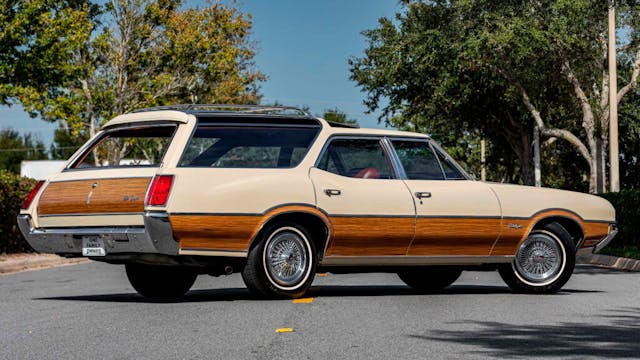
There’s no denying the surge in popularity that station wagons have seen over the past few years. Once as mundane as a minivan, the classic wagon has evolved to hold a sort of cult appeal. Not quite to the hipster levels of the Volvo 240, or to the sport wagon fury furthered by models like the CTS-V and Audi Avants, but there’s been a collective shift for many that these are cooler than people remembered.
Oldsmobile’s contribution to the wagon scene in the form of the Cutlass-based Vista Cruiser is an especially unique entry. Where the Vista Cruiser especially stands out is with the unique Vista Roof offering better views and improved lighting to passengers via additional windows in the roofline. Think of it as Oldsmobile’s take on a 21-window Volkswagen Microbus.
Clean wagons are especially hard to come by, as attrition from daily use and lack of initial collectibility saw many discarded rather than saved when they came to the end of their service life. Over the past few years, however, we’ve noticed wagon prices steadily climb to the point where, in plenty of cases, their values sit close to or above those of their comparable two-door siblings. In the case of the Vista Cruiser, the reason behind the spike in value likely has a lot more to do with it catching up with the market versus being a true breakout. It’s very likely we will see a leveling out of values from this point rather than their continued rise.
***
Check out the Hagerty Media homepage so you don’t miss a single story, or better yet, bookmark it. To get our best stories delivered right to your inbox, subscribe to our newsletters.
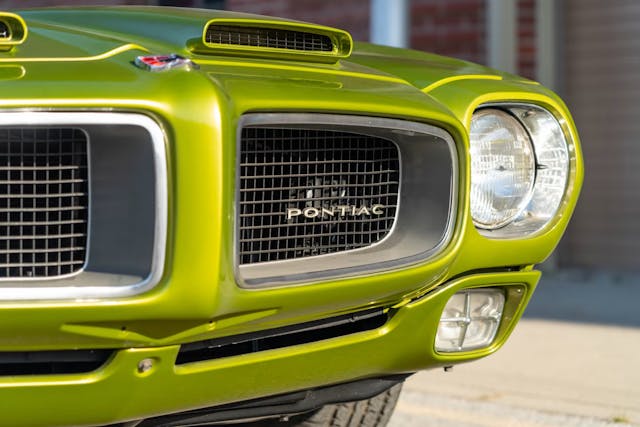
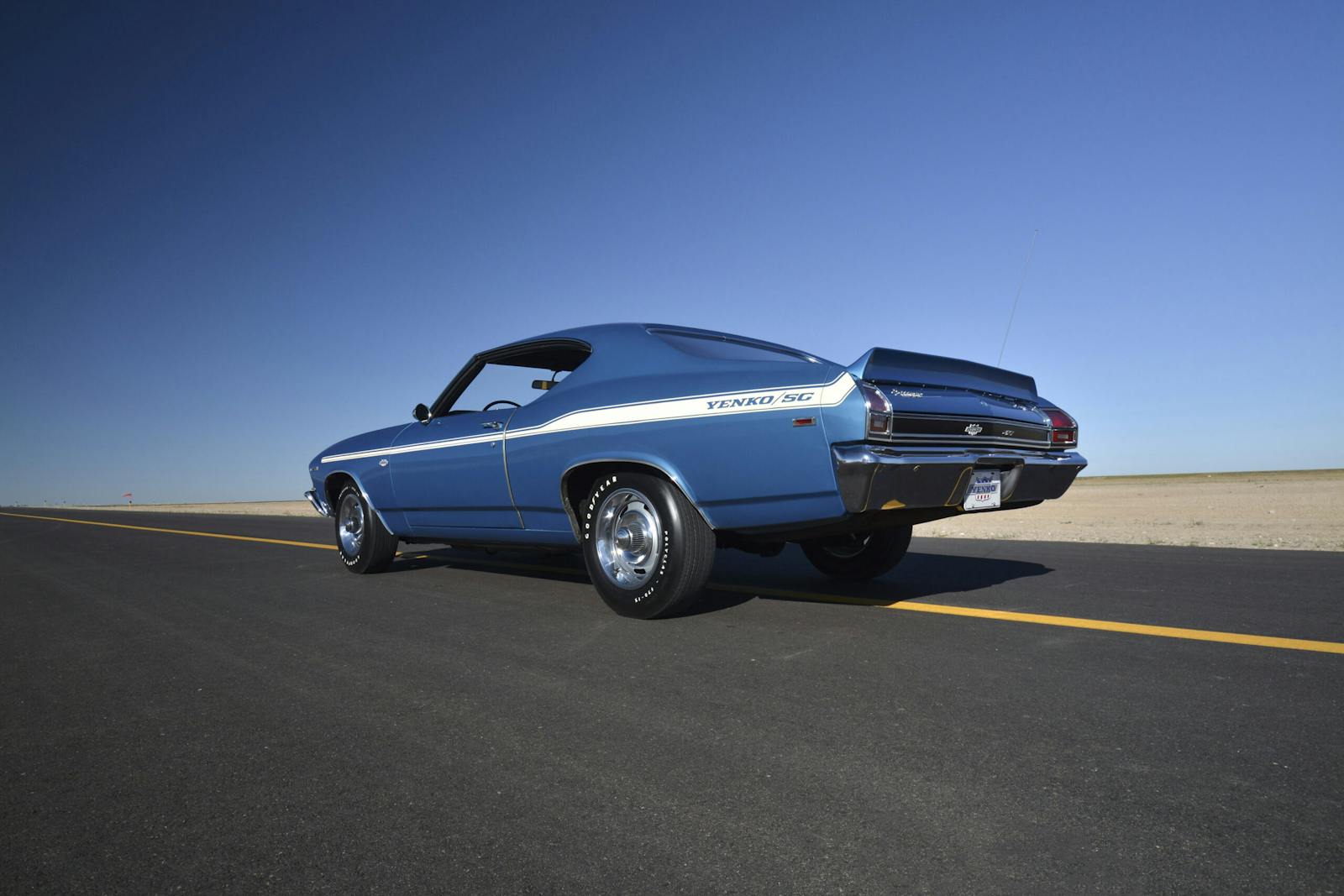
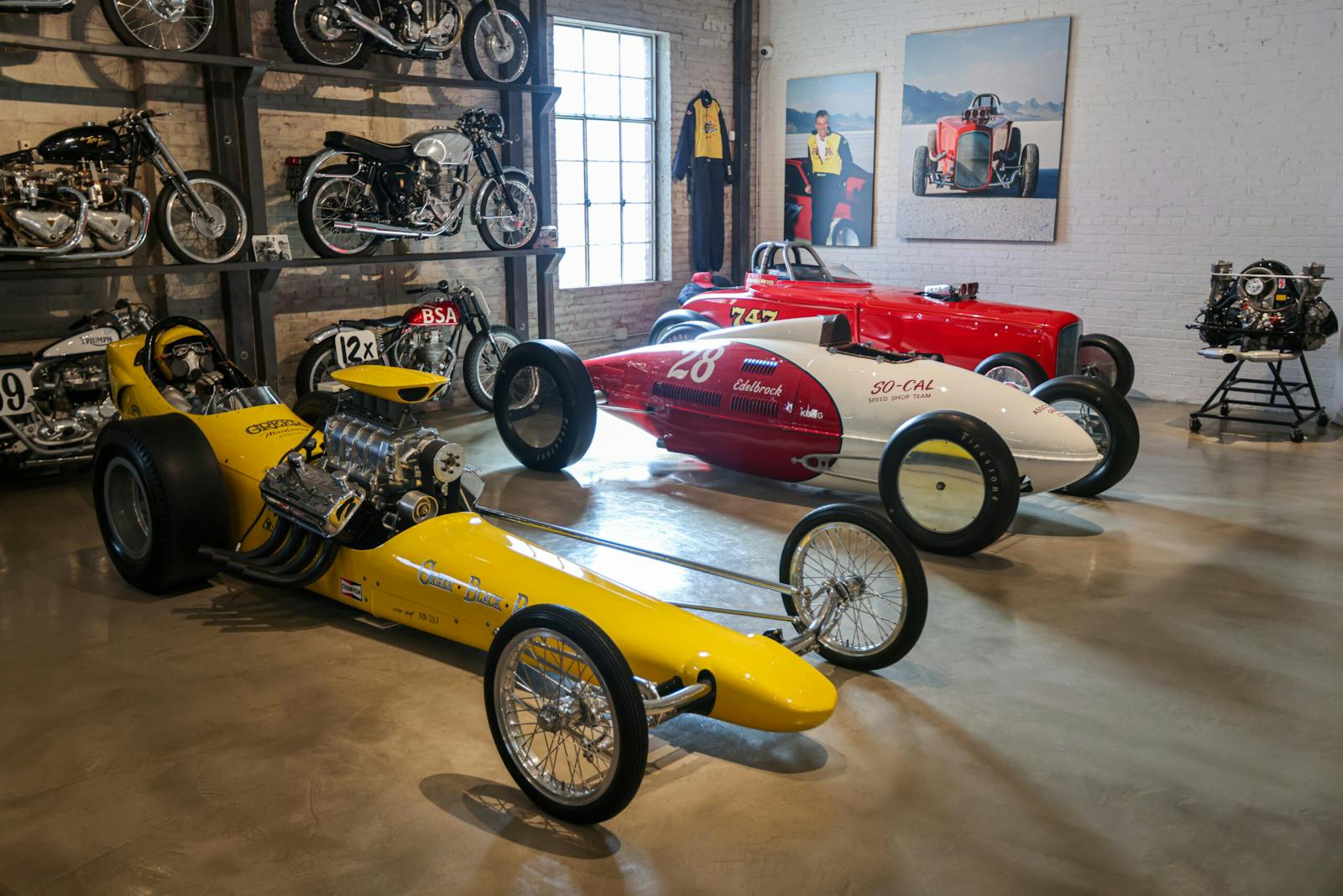
The Firebird is the only one to have enough volume of sales to really make a good est.
The Stude could be swayed by one or two sales alone of two expectational models.
Not many Buicks trade hands today as well wagons. The rarity of the wagon and demand is a good example of value.
No one in their right mind wanted a Fuego even new. I had a buddy that had one and what a mess.
Well, no one has ever accused me of being in my right mind. I fall in a third category per the write up: I vividly remember the Fuego and vividly remember wanting to buy one. Probably part of that was seeing one parked in the center of a plaza in Paris amidst a photoshoot worthy twilight. Or maybe just an affinity for oddball Europeans (I was on my second FIAT at the time had had placed a deposit on an Audi Coupe which I was debating pulling in favor of the Fuego). Anyway, never ended up with either the Audi or the Renault and the reason for that I can’t remember, vaguely or vividly. Maybe because we decided to have a kid instead?
We all. have made a mistake someplace.
My thoughts exactly. The sample size on 4 of 5 is so small that it represents a niche interest now a market indicator.
I find it absolutely hilarious that Studebaker had a President twenty years after they had a Dictator.
Yeah, they considered “Fair and Benevolent Ruler” until they saw the tooling costs for the nameplate.
Pretty funny, Mr. I!
I always considered myself “The Benevolent Despot” of my household. My teenage sons called me other names…
Hey, they were evolving! ;<)
Studebaker first offered both the President and the Dictator in 1927. The Dictator disappeared after 1937. We still wonder who thought that would be a good name. Dictator never has a pleasant connotation. The President name continued until World War II and returned in 1955.
I just used their valuation tool to help set a price for a 1970 dodge challenger, and at 24 k for one in good condition I’d be searching a long time before I found something just sayin
You would be hard pressed to find a Dodge Dart for 24k never mind a Challenger…
Hi John, which configuration were you looking at? Challenger values are about as varied as the engine and body style configurations. If you’re looking for a 318 powered coupe, yeah, that might be about on, if you are in the market for a Hemi car, that figure you mentioned would about pay for the engine.
I have to argue about the Riviera’s seats. My Father-in-law owned one when they were new and I thought it had the most uncomfortable seats I had ever ridden in. They were so pillowy soft that I felt like I was sitting in a hole, and my back would start hurting after an hour. Absolutely no support. However the seats were the only thing I didn’t like about the car, overall it was a pretty nice car with a lot of cool features.
I had one of these new. Seats were OK, but build quality was terrible, and the electronics were a joke. I had brake lights that would stay on until the battery drained, A/C that worked if the moon was in the right phase, and turn signal stalks that were falling off. When it was right is was nice, but it wasn’t nice often. Some of the problems just couldn’t be fixed. I lucked out the day I traded it in as apparently is was the right phase of the moon and all the electronics worked.
The Opel GT should also be on this list.
We certainly monitor Opel GT values each quarter, unfortunately they just didn’t move like the cars mentioned above did, which was the criteria for the cars outlined. But I agree, the Opel isn’t mentioned nearly enough on its own.
What about Yugo?
What about Yugo? He already included the ever popular Renault Fuego. Ha, ha, ha!
Lol I’d rather have the Frenchy.
They did consider it but the deal was hard to list.
A guys went to a parts store and said he wanted an air freshener for his Yugo. The guy behind the counter said that was a fair deal. Since no money was exchanged it is hard to use it as a comp.
Owning a 1962 Pontiac Grand Prix for 9 months and finally getting it drivable I’ve followed the market. It has definitely gone up in value, even the base 389 that came with mine. It’s got a 428 390 hp out of a 69 Grand Prix now.
They are doing well but there are so few that even fewer are traded and makes it harder to track pricing.
I am not sure how they list some cars they list here as they are traded so seldom it is hard to get a real value.
A buddy bought a new 62 Grand Prix – Burgundy/white interior/ 4-spd – coolest/rarest car on the road at the time.
We need a Hagerty list of the top 5 classic cars with four headlights. How interesting would that be, eh?
Studebakers were produced in Hamilton, Ontario, Canada into the 1966 model. Not 1963 as stated above.
And nobody cared for three additional years.
I care, and so do the thousands of members of the Studebaker Drivers Club and local Studebaker clubs.
Don’t know about the others, but given the economy, I think the Vista Cruiser is looking attractive to folks who think they might use it as their next home.
This is not as big as you think. The full size car is the large one. All these wagons are doing well as there are so few left after the demo derby wars. GM wagons are well looked for today.
My buddy, Red, had a Vista 🙂
I had a 66 Vista Cruiser don’t knock it my kids loved looking out the roof. Big deal in the day before sunroofs. Very reliable drive train too
My uncle had a wagon exactly like the one pictured and he was pretty proud of it. Traded it for a late 80’s FWD Cutlass sedan and he knew he made a mistake.
The thing about the Cutlass based VistaCruiser is that it’s not only a cool wagon on it’s own, but- Cutlass based. There are many 442/VistaCruisers out there, some better than others. Why Olds didn’t have Dr. Olds and Elephant Engine Ernie do an Ur-Sportwagen mystifies me; got a good friend that W30’d & Hurst Olds’d a ’70 Vista. Functional hood with the locks, built 455/TH400 with the His’n’Hers console shifter, all emblems and trim in and out, 12 bolt posi w/3.42 gears. Thing’s a beast, but with the 3″ exhaust equipped with 500ci Caddy mufflers and aftermarket resonators it’s a quiet cruiser, until foot plants.
I see what you did there.
MAN, that Firebird drives me crazy just looking at it with such sloppy body fit ! Anyone that can’t get body lines and gaps any straighter than that , should just leave them parked away hidden . To me that knocks off 1/2 the value IMHO.
I see that all the time @ car shows and it just makes me walk away seeing such sloppy workmanship, no matter how cool a car was originally .
It seems the GM devotees have run flat out of Camaros to hack up and now they’re on to Firebirds.
Well these cars were not assembled like cars today. They had gaps and miss alignments. Most had stacks of shims to get things to line up.
The cars restore correctly are better than new but many are as bad or worse than new. Add to this the sagging heavy doors and often the hinges were never replaced.
This was not just the bird but most cars of this era.
Getting the panels right on a 65 GTO is a major accomplishment.
Les, If you had ever tried to match metal panels to the rubber bird noses you would be amazed it is as close as it is. No way to get 2 quarters and a hood matched to the incredible flexing distorted rubber.
Yes I have Bob and there a “Bitch” !
I’ve been a classic car restorer all my life ( > 55 years and counting) and it IS a challenge at times. I hate the plastic/rubber bumpers and panel cars and why I try to avoid them like the plague .
My 71 Riviera had horrible gaps and panel alignment when I first started it and everything fits and aligns perfect now ,,all be it after a great deal of cussing and prodding into place,,LOL!
But that’s what separates a quality job from a sloppy one. Surprisingly you can use a bit of heat to massage plastic panels into alignment but it’s a Bear to do so generally and not always successful.
Plus I just love chrome, other than having to detail it all,,my 33 Packard takes FOREVER to detail and I don’t think I’ve ever been able to detail it to my total satisfaction sense I drive it regularly !
Don’t forget how bad the panel fits were straight out of the factory. Quality control was not good on anything of that era.
Yep! I agree. I always thought the 1st Firebirds were some of the ugliest cars out there with that stupid pointy nose. The later cars with the smooth nose always looked good. The Fuego name always sounded like something you were trying to cough up & spit out. LOL!!
The fuego was a surprise. The main stream of the market is still mainly fixated on muscle cars and Bronco-type SUVs. That’s good for the weirdo market I play in.
When the market goes down I look more to practical classics people can use like pick-ups, 90’s 2-door SUVs, and vans.
That vista cruiser is close enough to the Wagon Queen family truckster to be cool.
Clark Griswold traded in a Vista to buy the Truckster, he initially hated it and wanted his Vista back, but they had it crushed and delivered it back to him flat as a pancake!!
I nominate the ’70-’72 Firebird as the best looking domestic car of the era.
I second that motion!!